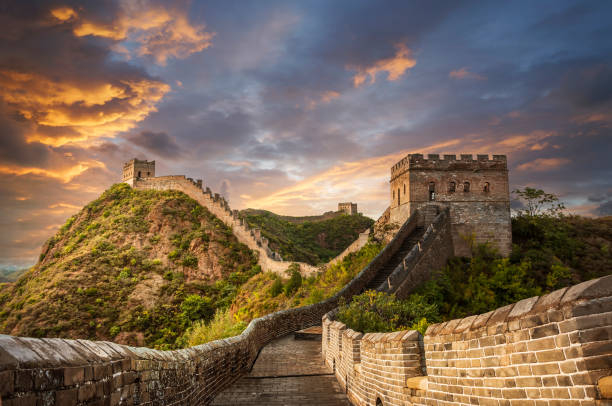Great Wall, China
As a defense against numerous nomadic tribes from the Eurasian Steppe, the Great Wall of China is a network of fortifications that was erected along the historical northern frontiers of ancient Chinese states and Imperial China. As early as the 7th century BC, certain walls were constructed. Qin Shi Huang, the first emperor of China (220–206 BC), later added certain portions. The Qin wall is largely gone. Later, other succeeding dynasties constructed and kept up numerous sections of boundary walls. The Ming dynasty constructed the wall's most well-known parts (1368–1644).
In addition to providing defense, the Great Wall served other purposes such as enforcing border laws, allowing taxes to be levied on goods traveling along the Silk Road, regulating or promoting trade, and managing immigration and emigration. The addition of watchtowers, troop barracks, garrison stations, the ability to signal with smoke or fire, and the fact that the Great Wall's route served as a transportation corridor all contributed to the Great Wall's increased defensive capabilities. For those seeking the top historical sites in the world, the Great Wall of China has an appeal that is difficult to resist. The world's longest wall was built along China's northern borders as a means of defense against invading forces during conflicts.












